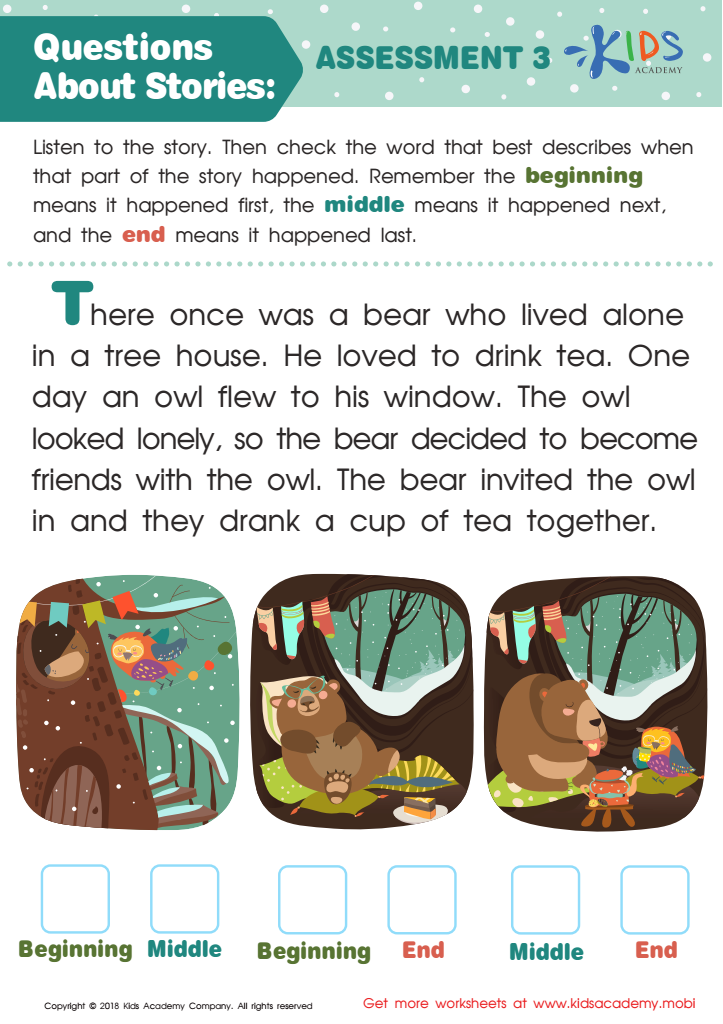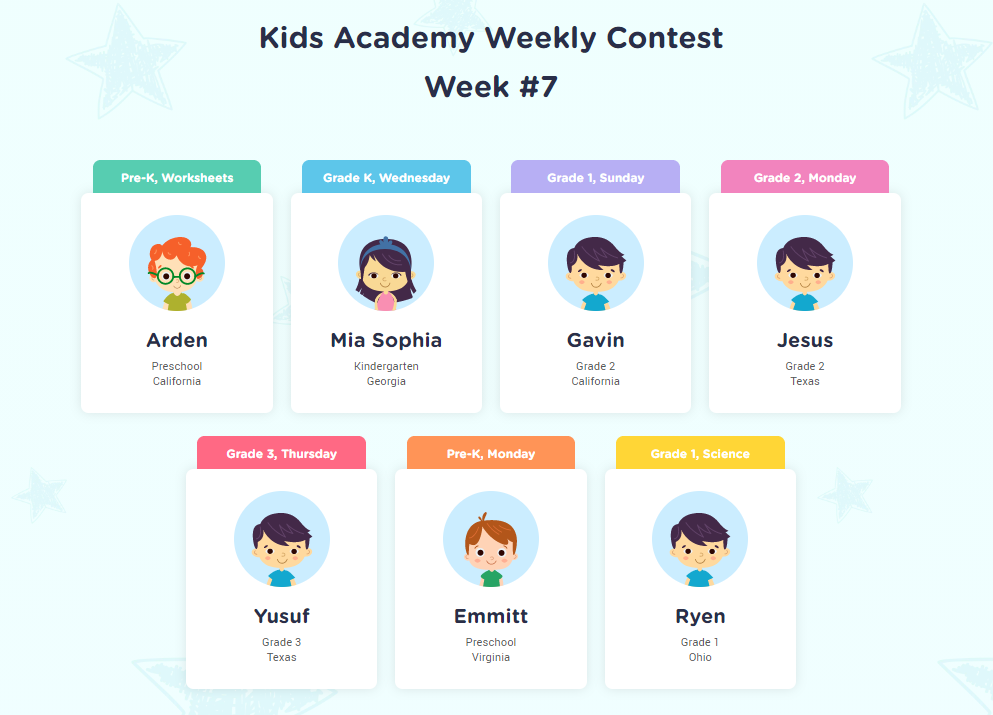Reading Fiction worksheets activities for Ages 4-6
10 filtered results
-
From - To


Craft and Structure: Assessment 1 Worksheet


Craft and Structure of Informational Texts: Assessment 3 Worksheet


Craft and Structure of Informational Texts: Assessment 2 Worksheet


Craft and Structure of Informational Texts: Assessment 1 Worksheet


Craft and Structure of Stories: Assessment 2 Worksheet


Questions About Stories: Assessment 3 Worksheet


Questions About Stories: Assessment 2 Worksheet


Questions About Stories: Assessment 1 Worksheet


Finding the Details and Connections: Assessment 2 Worksheet


Finding the Details and Connections: Assessment 1 Worksheet
Reading Fiction worksheets activities are invaluable tools in both educational settings and for personal enrichment. These activities are designed to enhance comprehension, analytical skills, and foster a love for reading. By engaging with Reading Fiction worksheets, learners are provided with structured opportunities to delve deeper into the themes, characters, and narratives presented in various works of fiction.
One of the primary benefits of Reading Fiction worksheets activities is their ability to improve reading comprehension. As readers work through questions and prompts related to the text, they are encouraged to pay closer attention to detail, understand the sequence of events, and grasp the nuanced meanings behind the words. This meticulous engagement with the text not only enhances understanding but also promotes retention, making the reading experience more rewarding and informative.
Furthermore, Reading Fiction worksheets serve as a catalyst for critical thinking and analysis. Through activities that prompt reflection on themes, character development, and plot, readers are compelled to think beyond the surface of the story. This encourages the development of analytical skills, as readers learn to examine texts from various perspectives, question underlying assumptions, and connect literature to broader societal issues.
Equally important, Reading Fiction worksheets activities help in cultivating empathy and emotional intelligence. By immersing in the lives and struggles of characters, readers develop a deeper understanding of diverse human experiences. This can lead to a more empathetic outlook towards others and a greater appreciation of different cultures and worldviews.
Moreover, these activities make reading more interactive and enjoyable. By breaking down the text into manageable segments and guiding readers through specific points of interest, worksheets can transform reading from a solitary act into an engaging exploration. This not only enhances the enjoyment of reading but also motivates learners to explore more works of fiction.
In conclusion, Reading Fiction worksheets activities are essential in promoting comprehension, critical thinking, empathy, and enjoyment of literature. They are powerful tools that enrich the reading experience, making the journey through fiction not just educational, but deeply rewarding.
 Assign to My Students
Assign to My Students




.jpg)











